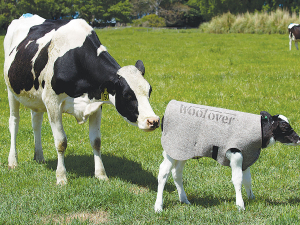But the need for commitment to wool supply by growers was a key theme reiterated by both Townshend and chair Mark Shadbolt at a roadshow in Wellsford in late October, the first of a national round of grower meetings.
The company had a loss in the financial year to June of $268,664, but Townshend says a $672,000 loss was budgeted for the first two years of operation and had come in under that at $619,000 through frugal management.
Shadbolt says revenue was $11m, up from last year’s $3.4m through “a hell of a lot of effort”. They hope to improve that drastically as they become more involved with shareholders’ wool. They now have 700 shareholders and 300 supporters supplying about 15-20m kilos of wool.
Townshend says it was a year of two halves, only really getting going in December 2013 once the business architecture was in place.
“We are now a quarter a way through the new financial year and what you see is a substantial ramp up on revenue and we are on track for a maiden profit,” he says.
The UK Camira lambswool contract, in its fourth year, was a success story, Shadbolt says. Targeted marketing had reached key influencers such as architects and designers. “We anticipate volumes will increase year on year.”
Laneve carpet wool contracts were also being developed as an option for growers. “You don’t have to support it, but we really want you to,” he said.
Volatility remains a killer in the industry and only a stable price mechanism model will change that, Shadbolt says. He believes growers should decide on a commitment – either their whole clip or part of it.
“We need to plan what volumes we will get so a commitment programme will be brought out. We can’t go to a customer in the world unless
we have the commitment from growers. There’s no point in signing a contract for one million kilos of wool unless we know the cockies will support that.
“We want to extend contracts, we want more and more of them to cover all of your wool. It doesn’t want to be just lambswool. It’s got to be hogget, your second shear, it’s got to be your full fleece and it’s got to be even your poorer types of wool.
“Blazer (an interior furnishing fabric) is the biggest wool product Camira has, but they have a whole series of others we are keen to pursue that also require reasonably specific wools.”
Townshend says premiums for regular carpet wool such as Wools of NZ brand Laneve are harder to achieve. They are in the 20-30c range but still worth having. They were trying to convince overseas spinners to buy their wool and were being joined by other NZ exporters “keen to join a race to the bottom”.
“We want something significantly smarter so our approach is steady and slow and focused on quality and profits around the Laneve brand.”
The aim is price stability but that relies on willing buyers also seeking price stability and longer term committed supply. They had a trial with one serious spinner and interest from four or five others. “For me to feel confident about going all the way with those guys I’ve got to have committed supply from you and know that there will be, say, 1000 tonnes of wool available for the programme.”
Wools of NZ is looking at priority access to the contracts for committed growers and a 5c loyalty fee. “There are already some guys pretty firmly committed to meat supply programmes, fertiliser programmes… this isn’t stepping out into some great wilderness,” says Townshend.











